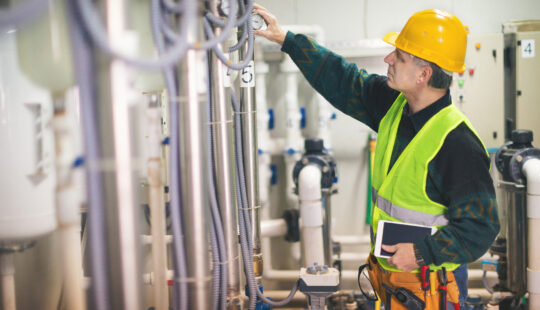As airline travel returns to pre-pandemic levels, airplane manufacturers are rethinking sustainability metrics, going deep and wide across the life cycle of millions of parts that comprise the airplanes that people fly in every day. So far, getting to carbon neutral has translated into the pursuit of fuel efficiencies from lighter-weight machine and engine designs, and rightly so – airplanes produce the highest percentage of their CO2 footprint while in flight. Even as these efforts continue, manufacturers see the next horizon in sustainability that touches the entire aviation supply and production chain, from airplane design and production to business operations and beyond.
“It’s not just about what sustainable airplane design and production looks like, but also how to create more sustainable operations for existing fleets,” said Torsten Welte, global vice president, head of A&D Industries at SAP. “Manufacturers are exploring how they can exchange more data up and down the value chain to design and manufacture the next generation of airplanes while making improvements to what they have for carbon-neutral business. Sustainable aviation connects data across engineering, procurement, supply chain, manufacturing, sales, and finance.”
Emission-Free Aviation Requires Holistic Strategy
Like most industries, airplane manufacturers factor rework into the cost of doing business. That approach won’t be um…sustainable in this next era as increasingly stringent policies such as the European Green Deal kick in and cost pressures rise. IDC analysts said that by 2024, 80% of global manufacturers will incorporate environmental sustainability into their product life cycle management processes and ecosystem, improving sales by 3%. The challenge for airplane manufacturers is keeping track of CO2 emissions across multilayered business operations.
“Companies need to understand the entire CO2 footprint of every part that’s used in the airplane, along with every step of work associated with it, including sourcing and production, quality checks, production stoppages and rework, shipping, and recycling,” said Welte. “Industry leaders are moving towards a holistic strategy for sustainable design through the airplane’s life cycle. For example, inside cabin materials are often switched out after a few years, with most ending up in landfills. How do you create a more circular economy during the airplane’s lifespan?”
Fostering a Sustainable Mindset
Sustainability requires manufacturers to bring a different mindset and tools into everyday activities such as design and procurement. According to Welte, some manufacturers see procurement as ripe for change, shifting purchase considerations away from the lowest price to suppliers that offer products meeting indirect, longer-term sustainability parameters.
“A CO2-friendlier part might have an initially higher cost, but offer recyclability options that reduce carbon emissions,” said Welte. “Additionally, as airplane manufacturers explore sustainable fuel alternatives and materials, designers will need to collaborate much more closely with suppliers, sharing data to source the highest quality products that will decrease rework and resultant CO2 emissions. For example, technology like SAP Ariba solutions and SAP Enterprise Product Development helps designers efficiently work together with suppliers to set and meet shared sustainable business benchmarks.”
Digital Innovations for Carbon Neutrality
Calculating the CO2 footprint of parts in an airplane is incredibly complex. It won’t be enough to evenly divide energy costs, such as electricity and heat, across different products. Accurate reporting calculates energy used far more precisely by individual parts based on all machine hours.
“Every activity, direct or indirect, has to be accounted towards CO2,” said Welte. “With greater visibility across the manufacturing value chain, companies can immediately spot problems with suppliers downstream to prevent rework by producing better products. When you can communicate faster with your business network, dynamically collecting and analyzing data from a centralized control tower, you can track your organization’s progress against company and industry benchmarks.”
It’s not lost on manufacturers that every slowdown carries a significant cost in wasted time, resulting in wasted energy. By 2023, IDC analysts predicted that 30% of manufacturers will share applications with industry ecosystem partners to improve visibility and operational efficiency and ensure safety, security, and quality. Driven by increased demand for environmental accountability in manufacturing ecosystems, IDC researchers expected 40% of G2000 manufacturers will use traceability technologies to mitigate risk and boost transparency by 2025. In the same timeframe, Gartner researchers predicted that by 40% of all manufacturing IT will own the responsibility of data modelling for sustainability and net-zero carbon targets. Already some manufacturers are using innovations like digital twins, which dynamically capture information that can speed up the production, product approvals, and certifications of new engines and aircrafts.
Deservedly or not, flying has a bad rap compared to other industries that can be equally or more energy intensive. But emission-free aviation is no mirage. Manufacturers have set their sights on a new horizon in sustainable business, bringing an ecosystem together to create a carbon-neutral future.
Follow me @smgaler.
This also appeared on SAP BrandVoice on Forbes.



